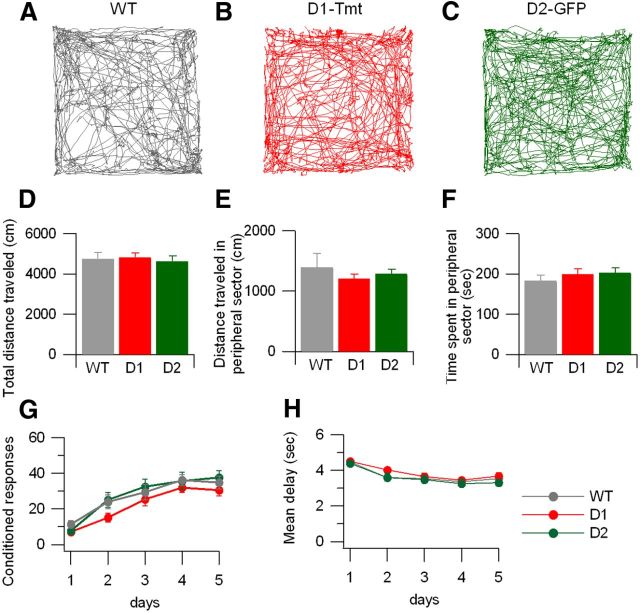Figure 1.
Open-field locomotor activity and active avoidance learning are similar in wild-type, D1-Tmt, and D2-GFP mouse lines. A–C, Example traces of locomotor activity recorded in a novel cage for 10 min in each mouse line. D–F, Summary of locomotor activity in each session (n = 10 wild-type mice, n = 10 D1-Tmt mice, and n = 12 D2-GFP mice). D, Total distance traveled. E, Total distance traveled in the peripheral sector. F, Time spent in the peripheral sector. G, H, Active avoidance behavioral training (n = 15 wild-type, n = 10 D1-Tmt, and n = 12 D2-GFP mouse lines). G, Number of conditioned responses per 60-trial session on each of 5 consecutive training days. H, Mean delay time between the onset of the light cue and the mouse leaving the chamber on each training day. In all panels, wild-type is shown with gray symbols, D1-Tmt with red symbols, and D2-GFP with green symbols.

